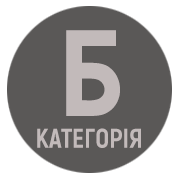Key characteristics of oral English professionally-oriented communication of IT specialists
DOI:
https://doi.org/10.32782/2617-3921.2021.20.301-309Keywords:
communicative competence, communicative roles, professionallyoriented communication, informal communication, semi-official communication, official communication, foreign language communicative competenceAbstract
Professionally-oriented communication is а special form of interaction between the subjects in sphere of professional activity, which focuses on the achievement of communicative needs, the implementation of professional responsibilities and functions, the establishment of correct moral and psychological atmosphere, and further productive cooperation with an achievement of the goal. Professionally-oriented communication is divided into three main groups and is being used according to the professional hierarchy. Those groups are informal – which is based on domestic, family and social relations, semi-official – which is used for business purposes and formal- which is implemented in a circle of colleagues during direct communication. The article also forms a set of approaches that regulate the process of formation of oral English-speaking communication of future IT professionals, the importance of mastering information and communicative technologies by future IT specialists and the ability to apply them for their intended purpose, to acquire the necessary knowledge, skills and abilities with their help, which in the future will influence the process of formation of key competencies among these specialists, is also substantiated. The purpose of the article is to highlight a set of approaches that regulate the process of formation of oral English-speaking professionally oriented communication of future IT professionals. One of the most crucial facts is that oral English-speaking professionally oriented communication of IT professionals is realized in the process of professional activity in order to perform professional duties, perform professional functions and social roles according to the positions they hold in the field of IT. Also, based on the analysis done in the article, we can interpret oral English-speaking professionally oriented communication of IT professionals as a process of creating and exchanging oral messages of professionally oriented content in English.
References
Бацевич Ф.С. Основи комунікативної лінгвістики. Київ : Академія, 2004. 344 с.
Биконя О.П. Теоретико-методичні засади самостійної позааудиторної роботи з англійської мови студентів економічних спеціальностей : дис. … д. пед. н. : 13.00.02. Київ : Київ. нац. лінгв. ун-т, 2017. 531 с.
Виноградова Т.Ю. Специфика общения в Интернете. Русская и сопоставительная филология : лингвокультурологический аспект. Казань, 2004. С. 63–67.
Іванишин Г.Я. Рівні сформованості професійно зорієнтованого діалогічного мовлення в іноземних студентів медичних ВНЗ у процесі вивчення української мови. Збірник наук. праць [Херсонського державного університету]. Педагогічні науки. 2013. Вип. 64. С. 242–245.
Микитенко Н.О. Теорія і технології формування іншомовної професійної компетентності майбутніх фахівців природничих спеціальностей : дис. … д. пед. н. : 13.00.04, 13.00.02. Тернопіль : Тернопільський національний педагогічний університет імені Володимира Гнатюка, 2011. 450 с.
Палихата Е.Я. Проблема навчання письма і писемного мовлення. Наукові записки. Тернопільський національний педагогічний університет імені Володимира Гнатюка. Серія : Педагогіка. 2012. № 1. С. 16–21.
Плотницька І.М. Ділова українська мова : навч. пос. 2-ге вид., перероб. та доп. Київ : Центр навчальної літератури, 2004. 256 с.
Психологія : Підручник / Ю.Л. Трофімов, В.В. Рибалка, П.А. Гончарук та ін.; за ред. Ю.Л. Трофімова. Київ : Либідь, 2001. С. 469–476.
Селіванова О. О. Лінгвістична енциклопедія. Полтава : Довкілля. Київ, 2010. 844 с.
Синекоп О.С. Ситуаційний підхід до диференційованого навчання майбутніх ІТ-фахівців професійно орієнтованого англомовного спілкування. Педагогічні науки. 2019. Вип. LXXХVІІ. С. 146–152.
Столярова М.О. Етикет у віртуальній англомовній комунікації (на матеріалі чатлайнових сесій) : дис. … к. філол. н. : 10.02.04. Київ, 2005. 209 с.
Томащук Ю.О. Дискурсивно-прагматичні характеристики англомовного Інтернет-інтерв’ю (на матеріалі Інтернет-журналів “gUrl”, “Seventeen”, “Teen Vogue”) : дис. … к. філол. н. : 10.02.04. Луцьк : Східноєвропейський національний університет імені Лесі Українки, 2016. 243 с.
Тулякова Т.Р. Особливості англомовного професійно орієнтованого монологу фахівців у сфері медіації та врегулювання конфліктів. Інноваційна педагогіка. 2020. Вип. 20. Т. 3. С. 85–89.
Формановская Н. Речевое взаимодействие : коммуникация и прагматика. Москва : Икар, 2007. 480 с.
Фролова І.Є. Стратегія конфронтації в англомовному дискурсі : монографiя. Харків : ХНУ iм. В.Н. Каразiна, 2009. З44 с.
Черниш В.В. Теоретико-методичні засади формування у майбутніх учителів професійно орієнтованої англомовної компетенції в говорінні : дис. … д. пед. н. : 13.00.02. Київ : Київський національний лінгвістичний університет, 2015. 621 с.
Чорнобай О.Л. Природа, структура і типологія спілкування (комунікації) у професійній діяльності юриста. URL: http://science.lpnu.ua/sites/default/files/journal-paper/2017/may/2392/vnulpurn20158 2457.pdf
Шандра Н.А. Формування англомовної лексичної компетентності у професійно орієнтованому писемному спілкуванні майбутніх фахівців з інформаційних технологій в умовах магістратури : дис. … к. пед. н. : 13.00.02. Тернопіль : Тернопільський національний педагогічний університет імені Володимира Гнатюка, 2019. 274 с.
De Vito J. Human Communication : The Basic Course. 8th ed. New York : Longman, 2000. 453 p.
Mykytenko N., Rozhak N., Semeriak I. Teaching communication strategies to the computer programming students. Advanced Education. 2019. Issue 12. 49–54.
Shea V. Core rules of netiquette. Netiquette. Virginia – San Francisco: Albion Books, 1994. Р. 32–45.



